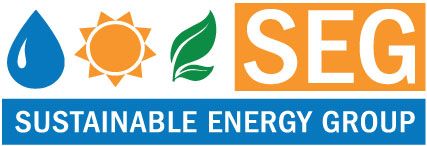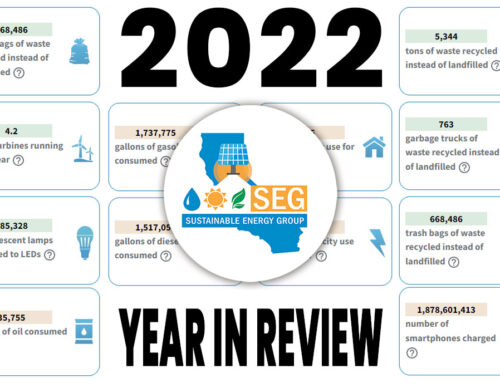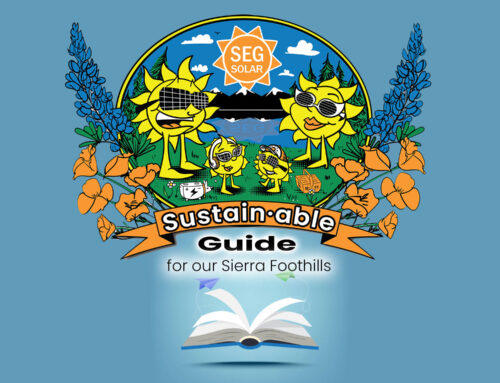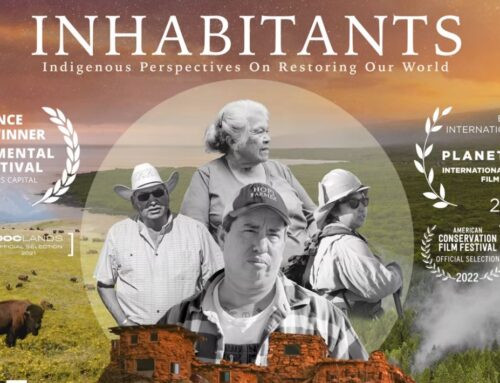This article was co-written by guest-authors Jorie Emory and Kate Gazzo of Bear Yuba Land Trust based in Grass Valley, CA.
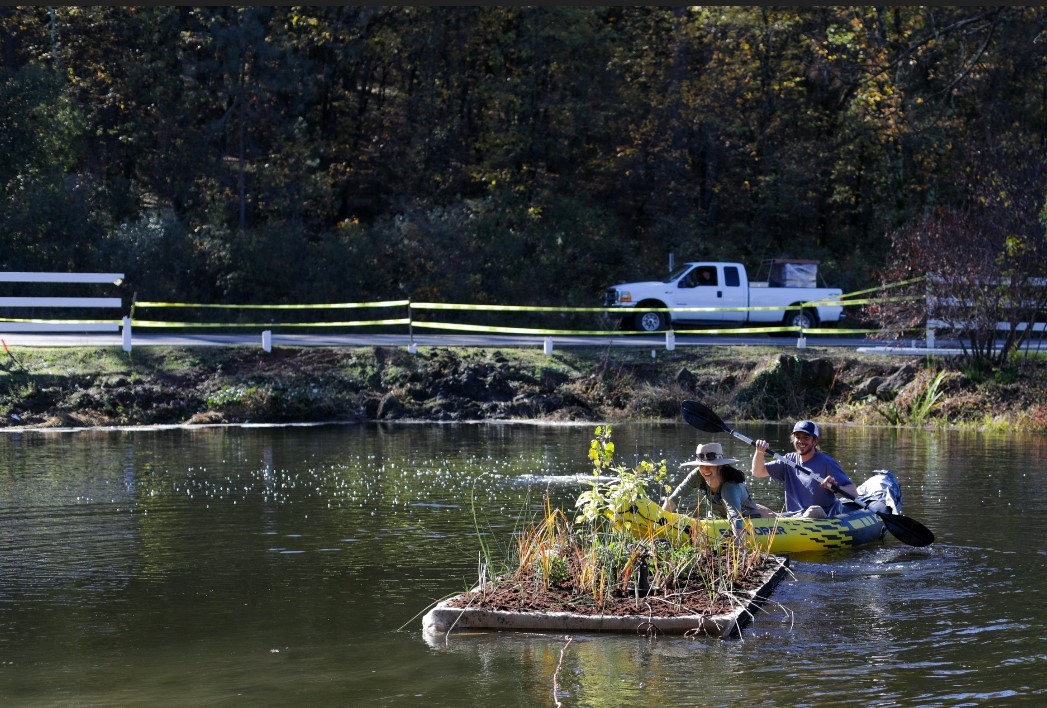


A floating island to promote riparian health
It’s not everyday you build an island of native plants to float in a pond! On a Saturday in November, Bear Yuba Land Trust (BYLT) staff and volunteers planted and deployed a floating wetland island at our Higgins Pond Preserve located along Combie Road. The floating island, purchased from Floating Islands West in Mokelumne Hill, is made entirely out of recycled plastic and works by providing a medium for plants to grow around the pond. We installed the island to serve as habitat for waterfowl and fish and to improve water quality in the pond.
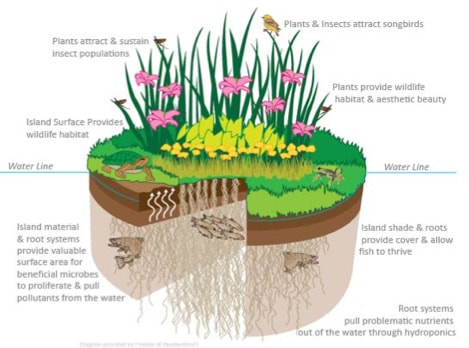


-image from floating islands international
The 80 plants we installed in the island take a few weeks of watering to establish until their roots grow into the water below the floating island. Once the plant roots reach the water, the roots provide underwater habitat for fish and amphibians, oxygenate the water, and block sunlight which reduces the water temperature and discourages the growth of algae. On the surface of the island, plants grow to varying heights and provide habitat for turtles, frogs, ducks, and herons. Islands are a refuge to some animals like ducks because there are no large predators.
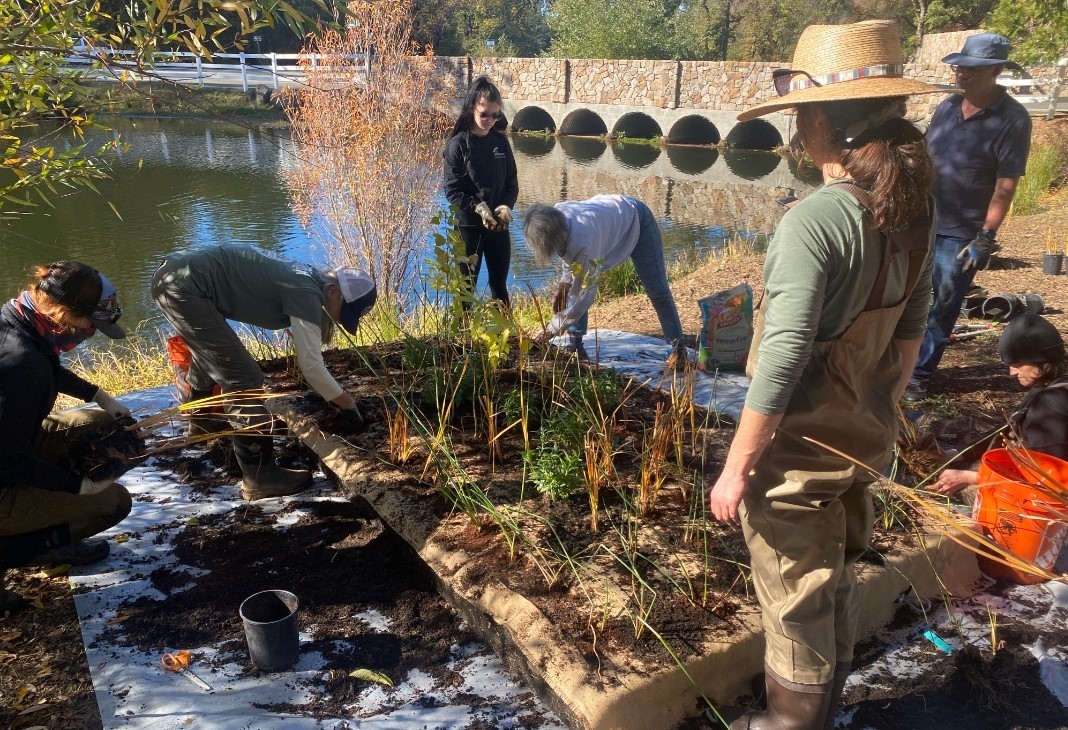


“This was one of my favorite volunteer days so far, it was arts and crafting meets restoration. We “played in the mud” to create our soil mixture of coco coir and worm castings, cut holes out of jute cloth for the top of the island, installed plants, and kayaked while pulling the island to the center of the pond to deploy it.” — Kate Gazzo, Stewardship Manager.
About Higgins Pond Preserve
Higgins Pond Preserve is located off of Combie Road in Grass Valley and is considered sensitive habitat in an area that is designated for high density development. The Preserve includes the Ragsdale Creek riparian corridor, a pond, and an open space buffer along the northern edge of a re-vegetated upland. There are two walking trails to the north and south of the pond but the pond is closed to the public for the purposes of wildlife habitat. Higgins Pond
was part of a 31-acre, 80-lot subdivision known as Cascade Crossing (Saddle Ridge Estates). The Preserve was acquired by BYLT in 2017 from the developer of Cascade Crossing.
During the construction of Cascade Crossing, the U.S. Army Corps of Engineers, as part of their permitting requirements, required that the pond and wetlands be protected as open space. When BYLT acquired the Preserve, we drafted a management plan which includes maintaining the habitat values of the pond and creek. Among other birds, the wetland and pond provide habitat for mallards, Canada geese, black phoebe, and belted kingfisher. Beaver, foothill-yellow legged frog and western pond turtles have been observed in the area. Warm water fish are
abundant in the pond.
For the past several years the pond has suffered from eutrophication and heavy green algae on the pond surface. Riparian plants were installed around the pond edge to improve habitat and water quality, however, the plants were repeatedly mowed by landscapers. Over the past year, BYLT has considered multiple pond restoration options, including raking, suctioning the bottom, adding harmless blue dye to prevent sunlight from penetrating and growing algae, and fencing off portions of the preserve to protect plants. When we heard about other preserve managers
using floating islands to address similar issues, we decided to try one out at Higgins pond.
Notes on the installation:
About BYLT
Bear Yuba Land Trust is dedicated to protecting and defending the natural and working lands of the Bear and Yuba River watersheds and empowering healthy, resilient communities through nature access and education.
Bear Yuba Land Trust cares for land in ways that ensure the sustainability and resilience of our core conservation values, including actively managing lands to encourage and sustain ecological health and diversity and engaging our community in programming that sustains natural resources such as wildlife habitat and water.
On BYLT Preserves, our Stewardship staff strives to create sustainable, resilient landscapes which are managed for forest health and wildlife habitat, protect our rivers and streams, sequester carbon, and protect and enhance pollinator populations by planting native pollinator gardens. Learn more and join us as a volunteer or member at www.bylt.org.
